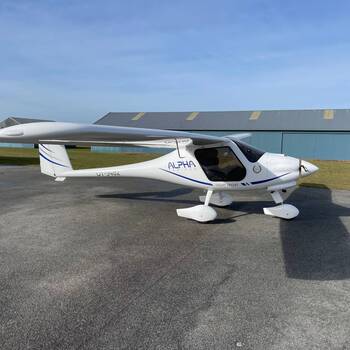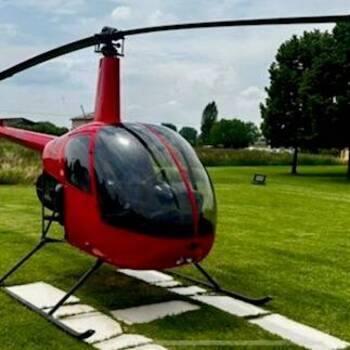Contact Information
Aircraft Details
- Price: Call for Price
- Year: 1987
- Make/Model: Yakovlev YAK-52
- Registration Number: G-BWSV
- Power: Piston
- Engines: 1 Engine
- Class: Sport Planes
- Listing ID: 6750748
- Partner ID: 60723
- Posted On: Oct 19, 2024
- Updated On: Oct 19, 2024
Description
WILCO Aviation are pleased to present to the market exclusively this Yakovlev Yak 52 G-BWSV owned and operated privately by its current owner at North Weald airfield for the last 11 years.
The Yakovlev Yak-52 (Russian: -52) is a Soviet-designed primary trainer aircraft that first took flight in 1976. From 1977 to 1998, it was produced in Romania by Aerostar, known locally as the Iak-52, under manufacturing rights granted through the COMECON socialist trade organization. Initially developed as an aerobatic trainer for the Soviet DOSAAF training program, the Yak-52 prepared both civilian sport pilots and military aviators. Today, it continues to be used in the F d ration A ronautique Internationale (FAI) World Aerobatic Yak 52 Competition, a prestigious one-design World Aerobatic Championship event.
The Yak-52 is a direct descendant of the single-seat Yakovlev Yak-50, an aerobatic competition aircraft. Built entirely from metal, the Yak-52 is powered by a robust Vedeneyev M14P nine-cylinder radial engine, producing 268 kW (360 hp). Designed to mimic characteristics of early postwar military fighters, the Yak-52 incorporates features such as a tandem cockpit layout, tricycle landing gear, a mixed-construction fuselage (combining monocoque and steel tube structures), and other design elements closely resembling the Yakovlev Yak-17 UTI jet trainer. Even the positioning of access panels, the radio antenna, and the overall dimensions share similarities with the Yak-17 UTI.
Engineered for military training, the Yak-52 boasts a fuel and oil system that allows for up to two minutes of sustained inverted flight. The engine drives a two-bladed, counterclockwise-rotating, variable-pitch propeller made from wood and fiberglass laminate.
Weighing in at 1,025 kg (2,260 lb) when empty, the Yak-52 is not only highly responsive but also excels in aerobatic performance. Despite its agility, the aircraft is relatively easy to fly and land, making it suitable for international aerobatic competitions up to the Advanced level. With stress tolerances of +7 and 5 Gs, and a roll rate that exceeds 180 degrees per second (recorded at up to 352 degrees per second to the right), the Yak-52 is capable of executing every manoeuvre in the Aresti catalog of aerobatic figures.
Like many Soviet military aircraft, the Yak-52 is built for rugged environments, requiring minimal maintenance. One of its most distinctive features, rare in Western aircraft, is its extensive pneumatic system. Engine starting, landing gear, flaps, and wheel brakes are all pneumatically powered, with spherical air storage tanks located behind the rear cockpit. These tanks are pressurised by an engine-driven compressor and are monitored via instrument panel gauges. The operating pressure ranges from 10 to 50 bars (145 to 725 psi), and a backup pneumatic circuit is available for emergency landing gear deployment if the primary system fails. Both the main and reserve air tanks can be recharged on the ground using compressed air, typically from a scuba-type air bottle.
Pilots accustomed to hydraulic systems may find the Yak-52 s pneumatic ground steering and braking system, controlled by differential braking via rudder pedals and a hand-operated lever on the control stick, takes some adjustment. The retractable tricycle landing gear remains partially exposed when retracted, adding useful drag for certain manoeuvres and providing some protection in the event of a forced belly landing.
G-BWSV comes at the asking prices with an included spares package comprising of a spare engine and air cylinders.
Total fuel 120 litres.
140knt cruise
Interior: Standard
Exterior: White, Red and Black
Trig TY91 Transceivers (8.33 kHz spaced)
AvMap Ultra
Air Speed Indicator (ASI)
Altimeter
Cylinder Heat Temperature gauge (CHT)
Carb Temperature gauge
Oil Temperature gauge
Oil Pressure gauge
Manifold Pressure gauge
Fuel Pressure gauge
G Meter
RPM gauge
Compass
Tow hook
External cover (wing / fuselage)
Interior 8/10
Exterior 8/10
YEAR: 1987
MAKE: Yakovlev
MODEL: Yak 52
REG NUMBER: G-BWSV
AIRCRAFT TYPE: Single
AIRFRAME HOURS: 676 (+/- 5hrs)
ENGINE MAKE: Ivchenco Vedeneyev M-14P
ENGINE HOURS: 86 (+/- 5hrs)
ENGINE OVERHAULED: 04/07/2007
PROP MAKE: Vperyod B530TA-D35
PROP HOURS: 2 (+/- 5hrs)
PROP OVERHAULED: 20/09/2022
CAA PERMIT EXPIRES: 03/09/2025
EMPTY WEIGHT: 1025 kg (2260 lbs)
MTOW: 1315 kg (2900 lbs)
PRICE: 62,000.00 GBP
Telephone: +44 (0)20 3475 9255
Email: sales@wilcoaviation.co.uk
https://wilcoaviation.co.uk/yakovlev-yak-52-g-bwsv-for.../
Airplane time state:
YEAR: 1987
MAKE: Yakovlev
MODEL: Yak 52
AIRFRAME HOURS: 676 (+/- 5hrs)
ENGINE HOURS: 86 (+/- 5hrs)
ENGINE OVERHAULED: 04/07/2007
PROP HOURS: 2 (+/- 5hrs)
PROP OVERHAULED: 20/09/2022
CAA PERMIT EXPIRES: 03/09/2025
Avionics
Trig TY91 Transceivers (8.33 kHz spaced)
AvMap Ultra
Interior
Interior: Standard
Interior 8/10
Exterior
Exterior: White, Red and Black
Exterior 8/10
Additional Features
Tow hook
External cover (wing / fuselage)















































